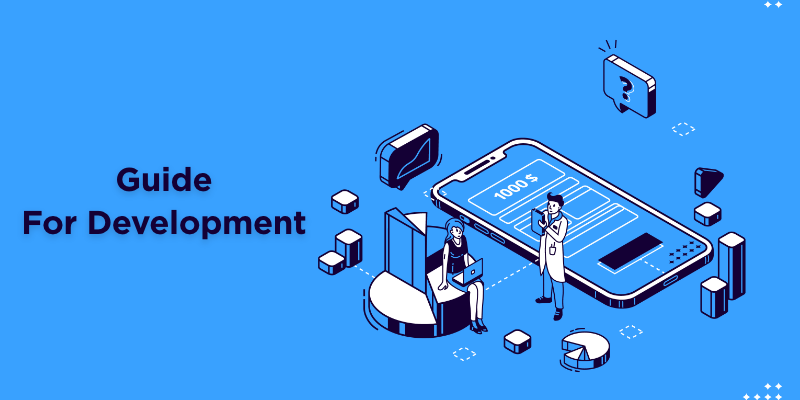Build p2p Payment App
Mobile payment apps, including peer-to-peer payment services like the Cash App, have shown a steady growth trend in recent years. With the increasing popularity of mobile devices, payment apps have become a convenient way for users to make transactions. Mobile payment apps offer a safe, secure, and fast way to transfer funds and make purchases. In addition to peer-to-peer payment services, cash advance apps like Dave have also become increasingly popular, offering users short-term loans and overdraft protection. To stay competitive in the mobile payment market, it’s important for payment apps to offer innovative features and services that meet the needs and expectations of users. With the right strategy and execution, mobile payment apps can continue to grow and succeed in the ever-evolving digital landscape.
Although this may be true in the recent era, millions of users join mobile payment app. It is the right time to invest in digital wallets here the marketer predicts billions of revenue through secure payment transactions.
To create a p2p payment app that stands out in today’s diverse marketplace – where traditional mobile banking apps, standalone p2p payment apps, money transfer apps, payment platforms, and crypto payment applications coexist – it’s crucial to understand the latest trends and features. One of these trends is the shift towards p2b (peer-to-business) transactions, which is a significant evolution from the original p2p model.
This development opens up new opportunities for businesses and consumers alike by allowing business payment options, but also presents unique challenges in terms of security and user experience. That’s definitely one of the trends with most popular p2p payment apps, and we’ll discuss it below. But first, let’s look at the different types of top apps for p2p payments that exist today:
Traditional mobile banking apps
Standalone p2p payment apps
Payment platforms
Crypto payment applications
For a deeper dive into creating your own crypto token, we recommend checking out our detailed guide.
Traditional mobile banking apps
Whether you use Wells Fargo, Chase Mobile, or any other mobile application from a bank or credit union, they all have an option to send money to your friends and family members. Some call these p2p apps “bank-centric,” but they are just bank-owned.
The p2p payment app feature per se is but an option in these mobile banking apps, and it’s often not very handy, especially if people you transact with bank in a different institution. Keep reading to find out creative ways to supercharge your p2p payments, even if it’s nestled within a larger banking app or if you’re looking to build a p2p payment app that meets the modern demands.
P2P Payment App Development Basic Functionalities

Even though having Android users as 75% of the smartphone market, iOS users are more willing to pay for an app than Android users due to the open-source heritage of Android. The average cost of an iOS app is $2.01 which makes a wide base of paying clients.
Secure Data Base
The app must be designed with high confidentiality on databases, payments, and transactions. The customer information must be authentic and the credentials must be kept secret.
Secure Registration
The app must enroll the users with an identity check with the essential credentials like user ID, password, register mobile number, and email id.
Secure Transaction
The users will save personal information like name, DOB, account details, credit/debit card details, payee account information, and so forth. It is essential to provide secure transactions to every valued customer.
E-Wallet Support
The user will use any type of digital wallet transaction by linking with a debit/credit card or any other wallets; hence it is designed to support all e-wallet transactions.
Inclusive Features
Apart from the above-secured transactions, it is essential to provide push notifications and third-party API integration for the benefit of the customer.
Steps For Developing A Peer To Peer Payment App

Decide The Platform
Mobile App is designed to support the OS of Android phones or iPhones. It is up to the marketer, to decide the best platform. The user group is decided mainly based on intensive market research. First, identify the number of iOS devices in the country and choose the target audience.
It is also possible to design the app based on the iPhone or Android or both. Based on the budget and target audience choose the desired platform and design the app for extensive use in the market.
Designing The Wireframe
The mobile app uses a middleman to allow the transfer of funds between the buyer and seller. Apart from enabling peer-peer payment, it also helps in making payments for bills, ticket booking, recharge, shopping, online shopping, flight ticket booking, etc.
Designing the wireframe is the first step for development. It provides a glimpse of the function that the app will look like.
Developing The API
API development plays a vital role in the mobile app development process. It is a third-party service that must be integrated to get instant access. The API interfaces between the mobile user and the service provider.
Reliable Payment Gateway Services Provider
The payment service plays a significant role in an e-commerce transaction. Along with the API interface, it is essential to look for a reliable operator who provides convenient services to the reliable payment gateway service to initiating on the app.
Designing The App
When figuring out how to build a p2p payment app, one of the most important factors is ensuring the app is user-friendly. A clean, simple design is key to making the app easy to navigate and convenient for users. This simplicity is essential to keeping users engaged and encouraging them to return frequently, whether they’re using it for money transfer apps, cash transfer app, or other payment apps. For this reason, focus on creating an intuitive interface that prioritizes ease of use.
Security is another crucial element, especially when dealing with sensitive transactions. The app should incorporate a secure API user interface to protect users’ data and ensure that apps to send money are as safe as they are convenient. Additionally, integrating features like automatic payment can streamline the transaction process, making it faster and more reliable for users. In short, your goal is to create an app that combines simplicity, security, and functionality, making it a standout choice among Magnifymoney p2p apps and other payment apps.
Optimal Development Technology

If similar to that of a cash app, your mobile payment app must be able to interact with any type of e-commerce site efficiently. The user may also use an LED TV view or laptop view for secure transactions.
The app must be responsive; as it must be accessible in any gadgets. To ensure access on any device, make sure to use optimal development technology for designing.
To create a money transfer app it is important to consider the following features:
- Notifications
- Digital Wallet
- Unique ID
- Sending and receiving money
- Sending bills and invoices
- Messaging
- OTP verification
- Push notifications in the mobile app, email, and registered mobile
- Payment initialization
- Sending bills and receiving money
The above features help the user to experience a better transaction similar to the cash app. While designing the app make sure to make a transaction in a fraction of seconds. The API user interface must be effective between the user and the third-party system.
Faster access helps to increase the customer count to the app. It helps for phenomenal profit and a significant percentage of revenue to the marketer.
Advantages Of Peer To Peer Payment App

Pay Without Having An Account
The peer-peer app has a similar advantage to the cash app. The cash app lets the user send and receive the money even from one party which is convenient for business. This means the customer can pay through the peer-peer payment app even if they don’t have an account. Small business gets more benefits and make business recognition.
Virtual Visa Card
The payment app offers a cash card for the convenience of the user. It offers a virtual visa card for secure transactions in e-commerce sites and retail stores. The user can directly add cash to the peer-peer App through Google pay or Wire transfer and make use of it.
Free Of Cost Transaction
The payment app allows transactions free of cost similar to the cash app. It allows both international and national payment transfers securely.
The cash transactions are processed immediately like the cash app in peer to peer payment app. The cash-out feature allows the user to transfer money from the user account to the bank account with confidentiality without any delay. The amount will be processed immediately with a secure transaction.
Similar to the cash app, the peer-peer payment app is fast and convenient for small businesses. The app can send and receive the payment, even if the sender doesn’t have a peer app account.
People don’t use this app for e-commerce transactions only, they also use it for purchasing and selling stocks and bitcoins.
Instant Notifications To Email Id
Once the payment is sent or received an instant notification will be sent to the customer email id. The mobile app pushes notifications and text messages to the registered mobile number regarding the payment transaction.
The app will send a prior email and text message to the customer if any suspicious activity is detected on the user account.
The app provides a detailed summary and the transaction history regarding the payment transaction to the customer, vendor, and buyer. All the details are confidentially documented and sent with complete security.
In case of loss of card, as like a cash card, the peer-peer app provides instant freezing of card and helps in the protection of fraud service.
Challenges Faced By P2P Payment App

Once you decide the peer-to-peer payment app you want to clone, make a list of features you want to integrate into the app. Once you are ready with the list, start to integrate with secure payment transactions. The following are the technical challenges that occur while designing the app.
Zelle is one of the most popular p2p payment apps in the market today. While it’s often seen as a mobile app for real-time payments, it’s much more than just p2p payment apps software. Zelle functions as a comprehensive payment platform with a robust back end and APIs, enabling interbank electronic money transfers between individuals directly within their online banking apps.
This makes Zelle stand out among the top apps for p2p payments, as it is not limited to being a simple p2p payment app but serves as an enterprise solution. It allows banks to provide secure p2p payments and streamline transactions for their customers across various banking applications. If you’re wondering how to build a p2p payment app, Zelle’s architecture provides a great example of how integrating a seamless, secure back end with a user-friendly front end can redefine the way people transfer money.
Security
In a peer-to-peer payment app like the cash app, it is mandatory to provide high security. This is the biggest challenge where each app development company will face. A developer must design a secure data management system to maintain security.
Confidential
The app developer must design the app with complete safety and security. Payment security involves the details about the customer, vendor, third party system, and the buyer. Hence, it is essential to have confidentiality in personal details.
Money Exchange
The peer-to-peer payment app deals with national and international exchange rates. The developing team may find it difficult in currency conversion in real-time. P2P service providers must take the initial step to overcome challenges while designing the app.
Lack Of Trust
The usual problem that occurs with the technical team in the P2P system is a lack of trust. It is tough to set the mind of the people towards the digital wallet. People are scared of the digital system and they still follow the traditional cash and carry method.
PCI DSS Compliance
Every peer-to-peer payment app must follow PCI DSS compliance to complete secure transactions. It helps in maintaining a secure network and creates powerful access control standards.
Investing time and money into a build peer-to-peer payment app similar to the cash app can bring a lot of fortune especially to the startup concern. People are slowly gaining trust in the payment app and start to migrate from traditional payment to digital wallet.
FAQs
What is a P2P payment app?
A peer-to-peer (P2P) payment app allows users to transfer money directly to each other using mobile devices and the internet.
What are the must-have features?
Key features include user registration, bank account linking, money transfers, transaction history, notifications, and security measures.
How much does it cost to build a P2P payment app?
Development can cost between $40,000 and $150,000+ depending on features, platforms, and security requirements.
Can the app support international payments?
Yes, but it requires multi-currency support, global banking APIs, and regulatory clearance in different regions.



